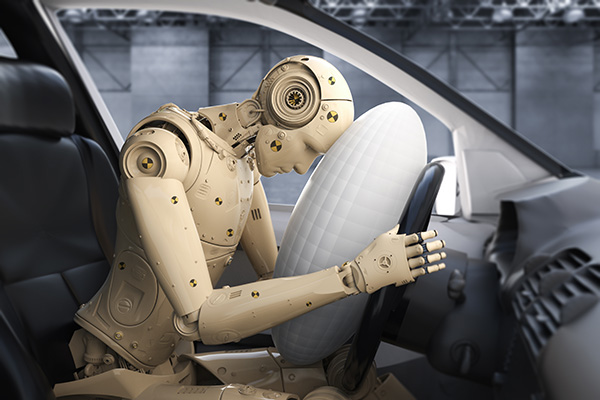
Car safety has evolved significantly over the decades, and airbags have become crucial components in protecting passengers during collisions. Have you ever wondered how these life-saving devices work? Let's explore the fascinating science behind airbags and why they are indispensable in modern vehicles.
The Evolution of Airbag Technology
Airbags weren't always standard in cars. It wasn't until the 1980s and 1990s that they became widely adopted. Early airbags were a significant innovation, but they lacked the sophistication of today's systems. Modern airbags are the result of extensive research and technological advancements, making them more effective and reliable than ever before.
How Do Airbags Work?
At the core of an airbag system are sensors, inflators, and the airbag itself. When a collision occurs, the car's sensors detect the sudden deceleration. This data is sent to the airbag control unit, which determines if the impact's severity warrants deployment. If deployment is necessary, the control unit sends a signal to the inflator.
The inflator contains chemicals like sodium azide and potassium nitrate. When ignited, these chemicals react to produce nitrogen gas rapidly. This gas fills the airbag within milliseconds, cushioning the impact for the passengers. The entire process, from detection to inflation, happens almost instantaneously, showcasing the marvel of modern engineering.
Types of Airbags and Their Placement
Not all airbags are the same. Different types are strategically placed around the vehicle to maximize protection. The most common are frontal airbags located in the steering wheel and dashboard. These are designed to protect the driver and front passenger during head-on collisions.
Side airbags are installed in the seats or doors and protect occupants during side impacts. Curtain airbags deploy from the roof and cover the side windows, providing head protection in rollovers or severe side collisions. Knee airbags, although less common, are becoming more popular and help prevent leg injuries.
The Role of Seatbelts in Airbag Effectiveness
While airbags are essential, they are designed to work in conjunction with seatbelts. Seat Belts help position passengers correctly, ensuring that the airbags provide maximum protection. Without a seatbelt, a passenger might be thrown into an airbag forcefully, potentially causing more harm than good.
Seat Belts also help manage the forces during a collision. By keeping passengers in place, they reduce the likelihood of secondary impacts inside the car, making the overall safety system more effective.
Advancements in Airbag Technology
Airbag technology is continually evolving. Recent advancements include multi-stage airbags that deploy with varying force depending on the severity of the collision and the occupant's size. This innovation helps minimize injury by reducing the impact's intensity when less force is needed.
Another breakthrough is the introduction of external airbags. These deploy outside the vehicle to absorb impact forces before they reach the cabin. While still in development, external airbags hold promise for further enhancing passenger safety.
Maintaining Your Car's Airbag System
Ensuring your airbag system is in optimal condition is crucial. Regular maintenance and prompt repairs are essential. If your airbag warning light comes on, it indicates a potential issue with the system. Ignoring this warning can compromise your safety in the event of a collision.
It's also important to understand that airbags have a shelf life. Most manufacturers recommend replacing airbags every 10-15 years. Check your vehicle's manual for specific guidelines and ensure timely replacements to keep your safety systems up to date.
Questions and Answers
What happens if my airbag warning light is on?
If your airbag warning light is on, it indicates a potential issue with the system. It's crucial to have it inspected by a professional as soon as possible to ensure your airbags will deploy correctly in a collision.
How often should airbags be replaced?
Most manufacturers recommend replacing airbags every 10-15 years. Check your vehicle's manual for specific guidelines and ensure timely replacements to keep your safety systems up to date.
Do airbags deploy in all types of collisions?
Airbags typically deploy in moderate to severe frontal collisions. However, side airbags and curtain airbags may deploy in side impacts or rollovers. The system's sensors determine whether deployment is necessary based on the collision's nature and severity.
Ready to ensure your car's safety systems are in top shape? Visit Sunny Service Center today for a comprehensive airbag system inspection and maintenance.